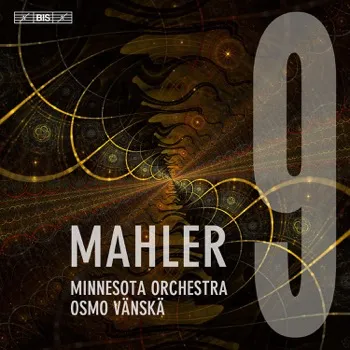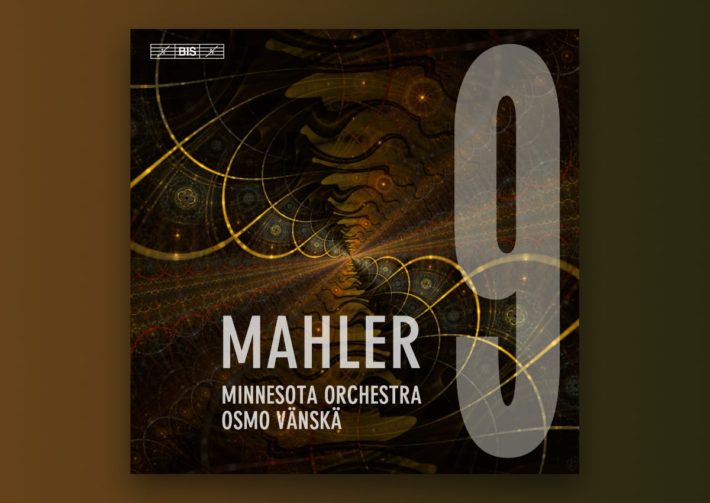Vänskä’s Mahler cycle continues, with only Symphonies Nos. 3 and 8 remaining to be released. I have reviewed three previous entries: a beautifully played first symphony that was emotionally cool; a far more impressive seventh symphony, and a tenth symphony (in Cooke’s completion) that made my list of best recordings in 2021. So, I come to this recording with heightened expectations.

BIS’s exemplary sound presents a deep and wide soundstage with plenty of warmth and transparency. The performance’s incredible range of dynamics, from Vänskä’s beloved barely audible pianissimos to the densest brass-laden climaxes is fully captured. I know of no other recording matching this level of clarity and depth, especially in SACD format – it really is an audio masterclass in the art of Mahler’s orchestration.
The Minnesota Orchestra, too, is glorious. The players have developed a Mahlerian sound that could be easily mistaken for their Berlin and Amsterdam counterparts. They offer all the colors and tonal weight this score demands. Solos are unfailingly impressive, especially from principals Adam Kuenzel (flute), Fei Xie (bassoon), Michael Gast (horn), and Manny Laureano (trumpet). The clarity brought to this contrapuntal writing, especially in the third movement, indicates an ensemble that clearly listens to one another.
Frustratingly, all of this excellence feels wasted in an interpretation that seems disconnected from the score’s emotional trajectory. The opening bars, which should softly steal in, delicate and halting, here sound forthright and businesslike. The first movement is a battle of intense and conflicting emotions: desperate rage and grief, relieved by moments of numbed placidity. But here, each climax gets louder and heavier, but they carry no emotional clout. What should be the most devastating moment at 17’35” is here emotionally detached, whereas in Berlin with Karajan (DG) the trombones pin us to the wall as they wail with fury and grief.
One of Vänskä’s interpretative strengths is the shaping and control of long-term structure, but here shifts between sections feel disjointed, especially when compared to the sweeping vision of Rattle’s recent BRSO performance. Vänskä seems unwilling, or unable, to let his players off the leash, containing their energy and power at moments when it should overwhelm and flood over. While the respite at 25’17” is undeniably haunting (the flute conjuring an atmosphere aching fragility), the moment is less affecting because the passage before it was too reigned in.
The opening of the second movement is beautifully shaped, placing us right in the middle of country Ländler. But when the new section suddenly begins (at 2’52”) the tempo change is minimal, underplaying dramatic contrast. There is too little sardonic bite and ugliness – even Karajan solicits a harsher tone here and throughout the movement. The third movement is more successful, because the playing and recording are just so fantastic, offering us a startling clear vision of the score. And the trio is special, with breathtaking trumpet playing that creates such an otherworldly atmosphere. But, despite the virtuosity of the playing, the coda is overly controlled, never once conveying the sense of going off the rails, which is surely what Mahler intends.
I thought Vänskä might be steadily building the music’s emotional energies so that the last movement would suddenly mine a deeper emotional core, but the opening measures are cursory, with little rubato or phrase shaping. The string sound is refulgent, but the atmosphere seems closer to Adagio of Bruckner’s ninth. The passages of sparse counterpoint are excellent, and the soft purity of the violins is marvelous at 3’52”. But the movement’s terrible climax (14’20”) has none of the raging anger and hopeless despair it must have. Vänskä just pushes through it, and without this awful annihilation, everything that comes after, even when played with the exquisite tenderness heard here, lacks emotional impact.
Ironically, Jeremy Barham’s excellent program notes chart the music’s emotional journey far more fully than the performance itself. The recordings of the seventh and tenth symphonies convinced me that Vänskä had become an interesting and perceptive Mahler conductor, which makes this ninth all the more disappointing.
Mahler – Symphony No. 9
Minnesota Orchestra
Osmo Vänskä – Conductor
BIS Records, hybrid SACD BIS-2476




















